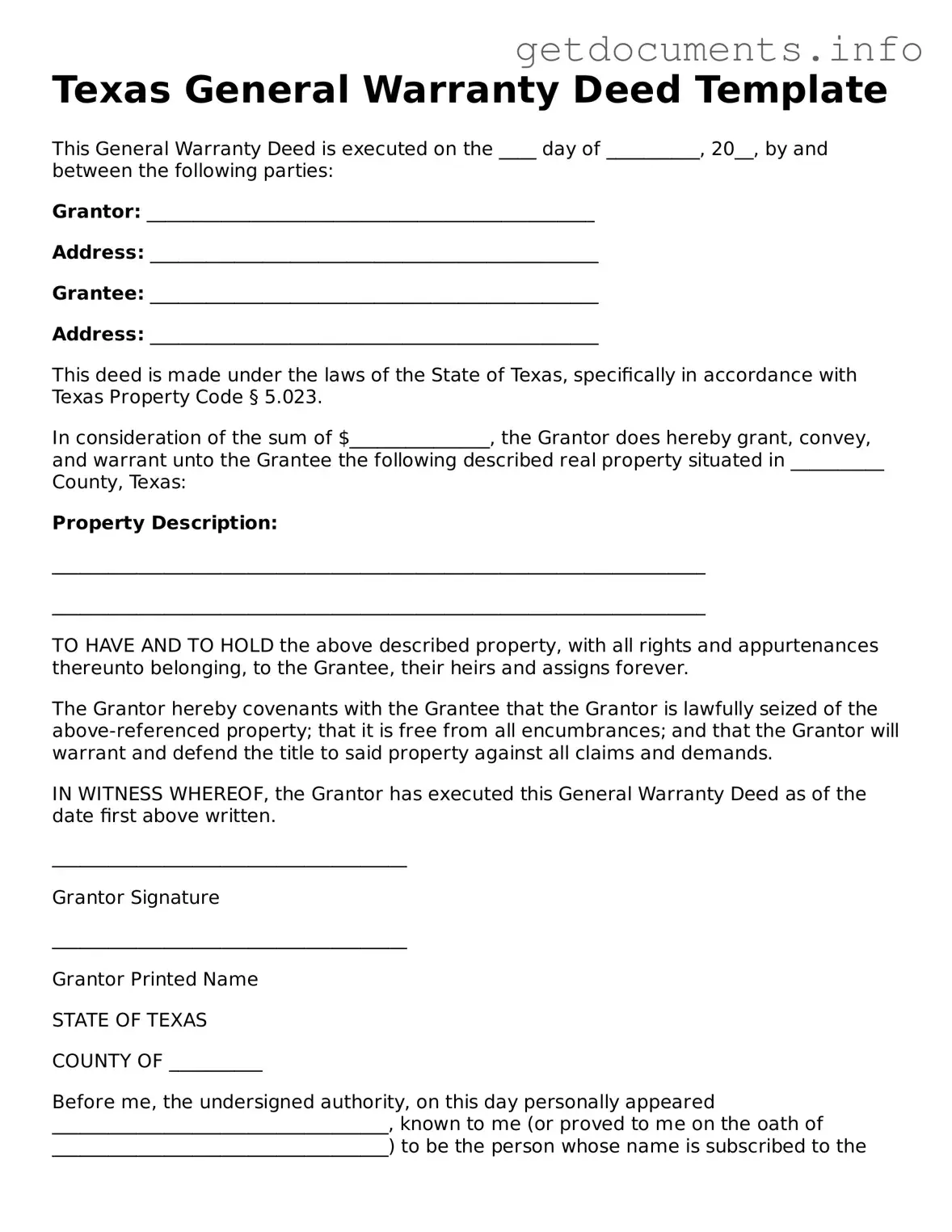Free Deed Template for Texas
A Texas Deed form is a legal document used to transfer ownership of real property from one party to another in the state of Texas. This form outlines essential details such as the names of the buyer and seller, a description of the property, and any conditions tied to the transfer. Understanding how to properly fill out this form is crucial for ensuring a smooth transaction, so take the next step by clicking the button below to get started.
Access Deed Editor
